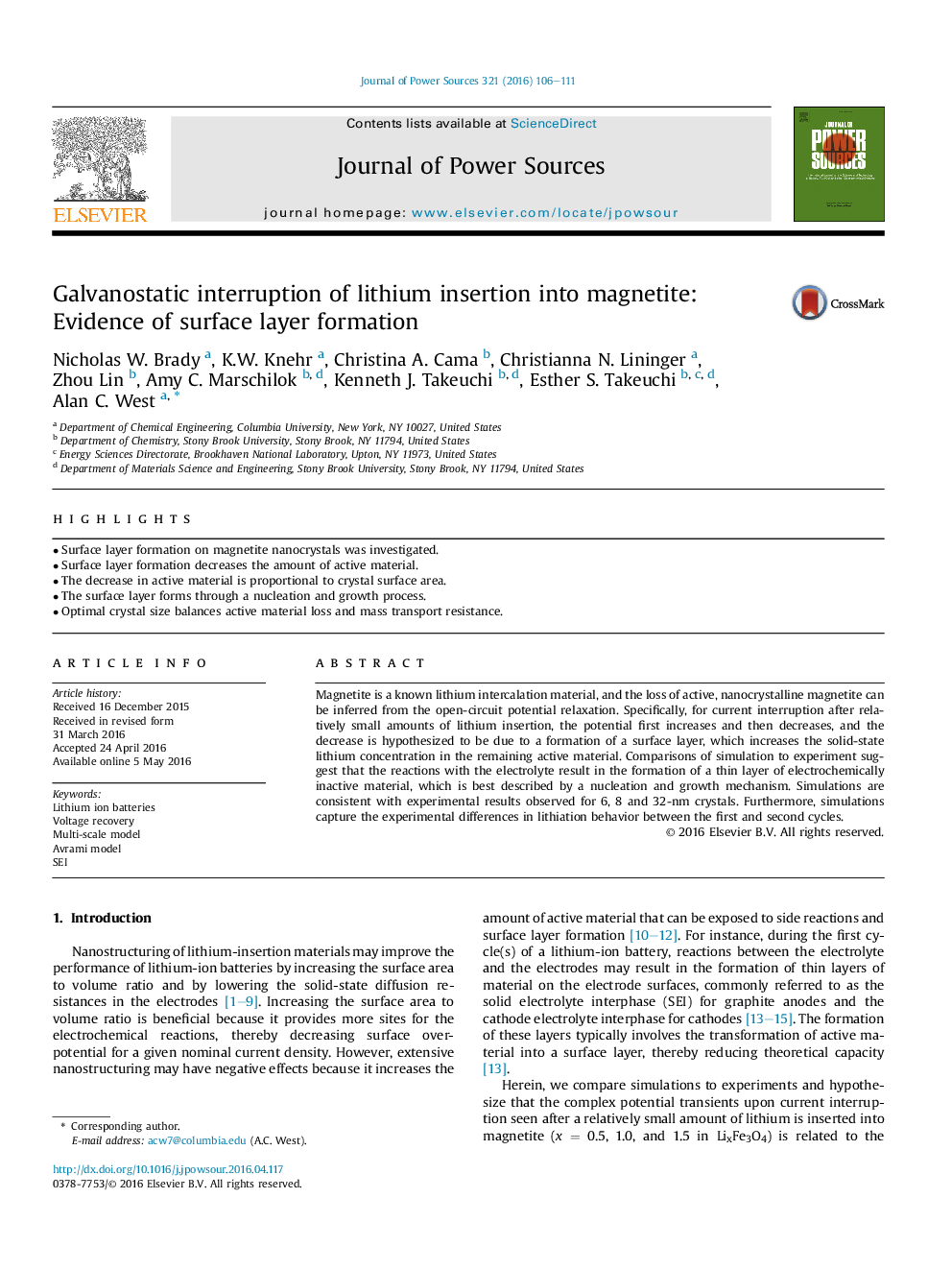| Article ID | Journal | Published Year | Pages | File Type |
|---|---|---|---|---|
| 1291789 | Journal of Power Sources | 2016 | 6 Pages |
•Surface layer formation on magnetite nanocrystals was investigated.•Surface layer formation decreases the amount of active material.•The decrease in active material is proportional to crystal surface area.•The surface layer forms through a nucleation and growth process.•Optimal crystal size balances active material loss and mass transport resistance.
Magnetite is a known lithium intercalation material, and the loss of active, nanocrystalline magnetite can be inferred from the open-circuit potential relaxation. Specifically, for current interruption after relatively small amounts of lithium insertion, the potential first increases and then decreases, and the decrease is hypothesized to be due to a formation of a surface layer, which increases the solid-state lithium concentration in the remaining active material. Comparisons of simulation to experiment suggest that the reactions with the electrolyte result in the formation of a thin layer of electrochemically inactive material, which is best described by a nucleation and growth mechanism. Simulations are consistent with experimental results observed for 6, 8 and 32-nm crystals. Furthermore, simulations capture the experimental differences in lithiation behavior between the first and second cycles.
